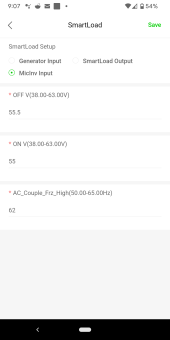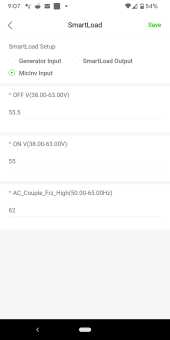Success!!!
I finally got it working! I appreciate all the advice from everyone on here as I performed many many tests over that past few months from all your suggestions. It was my more in depth conversation with
@DER Solar and also suggestions from
@BenW that finally got it working.
Just to reiterate my situation:
On the site there is 24 x Enphase IQ8+ micros AC coupled into the GEN port of the Sol-Ark 12K, no DC coupled solar. 16 x Rolls S6 460AGM battery bank used for partial home backup.
Essentially this is what I did to get it working. I Drained the batteries down to 60% using the % charged SOC mode on the Solark - the GEN port relay opens as soon as the grid power is lost. What made it successful was switching back to the Enphase default grid profile. Up until this point I had it on the CA rule 21 profile (and tried many many others) with no success even at 60% SOC the micros still did strange things like shut on and off and would not turn on. The reconnect time for the CA rule 21 profile was 10 seconds which I think was messing with the micros. As soon as I switched to the default profile after 5 minutes all 24 micros fired up instantly and produced full power at just over 7kW. I don't think I can upload it but I have a video of it working, maybe I'll take screenshots. Enphase did perform a firmware update for my site but I'm not convinced that was the determining factor. I think the default grid profile and low battery SOC without frequency shifting were the main factors to get it going.
I performed many tests to try and see if anything would make it unstable and crash like what I have been witnessing up until this point but every single time the micros came back on around 5 min and 15 seconds later and fully cranking at 7kW. It was a beautiful sunny day and I had this working for over 2 hours off grid and charged the batteries back up from 60% to about 80% as well as powered loads. I have never seen it work this smoothly before, like I said I had only ever had it working for maybe 2 minutes before it would crash and burn. I am confident and am considering this is a success! Before this even turning on a space heater or a larger load would trigger the micros off and I could never get them to turn back on.




